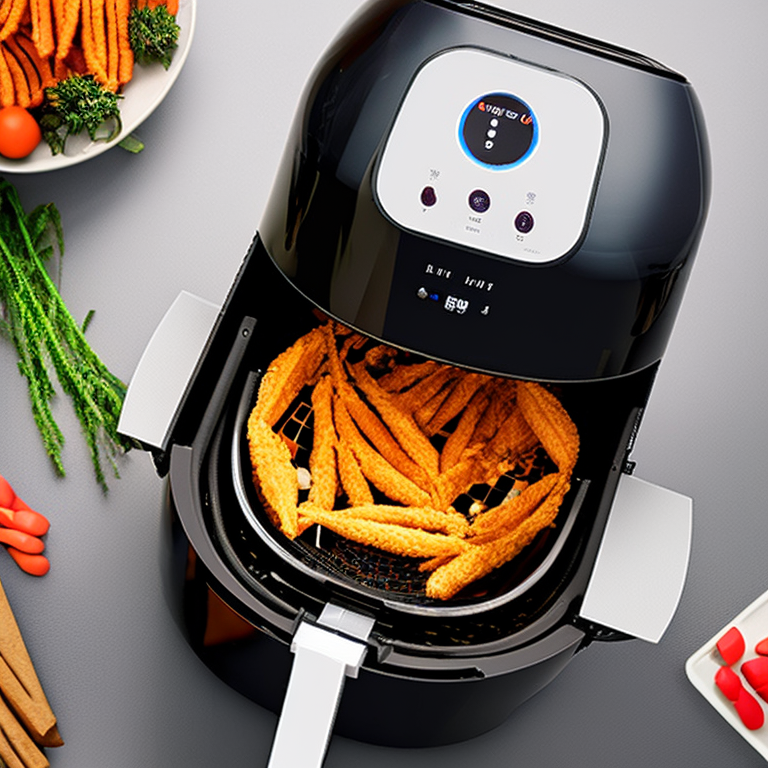
Yes, you can safely use a silicone liner in your air fryer, provided it’s heat-resistant and fits properly. Most silicone liners are designed to withstand temperatures up to 220°C, making them suitable for air frying. However, always check the manufacturer’s guidelines for both your air fryer and the liner to ensure compatibility.
Silicone liners are a popular accessory for air fryers because they simplify cleanup and prevent food from sticking. Unlike parchment paper, silicone liners are reusable and can be washed easily. They’re especially handy for cooking greasy foods like chicken wings or crispy potatoes, which often leave residue in the basket. For more recipe ideas, check out our air fryer recipes collection.
Another advantage is that silicone liners help distribute heat evenly, reducing the risk of hot spots. This can be particularly useful when cooking delicate items like fish or vegetables. Just make sure the liner doesn’t block the air fryer’s fan or vents, as this could affect cooking performance.
Not all silicone liners are created equal, so it’s important to pick one that’s specifically designed for air fryers. Look for liners labelled as heat-resistant up to at least 200°C, which is the typical maximum temperature for most air fryers. Avoid liners with plastic components or coatings, as these may melt or release harmful fumes.
Size matters too—your liner should fit snugly in the basket without overlapping the edges. A liner that’s too large can obstruct airflow, while one that’s too small may not catch all the drips. Many brands offer liners tailored to specific air fryer models, such as Ninja or Philips, so it’s worth checking compatibility before buying.
Place the silicone liner at the bottom of the air fryer basket, ensuring it lies flat and doesn’t cover the holes. For best results, preheat the air fryer for a couple of minutes before adding food. This helps the liner settle and prevents it from shifting during cooking. If you’re reheating leftovers, a liner can prevent sticking—just avoid overcrowding the basket.
While silicone liners are generally safe, there are a few precautions to keep in mind. Never use a liner that’s damaged or has visible wear, as this could compromise its heat resistance. Similarly, avoid using silicone liners for recipes that require temperatures above 220°C, as this could cause melting or degradation over time.
It’s also wise to monitor your air fryer during the first few uses with a new liner. If you notice any unusual smells or smoke, turn off the appliance immediately and remove the liner. For tips on maintaining your air fryer, visit our guide on air fryer cleaning.
Silicone is inherently flame-resistant, so it won’t catch fire under normal air frying conditions. However, if the liner is exposed to direct contact with heating elements or extreme temperatures beyond its rating, it could degrade. Always follow the manufacturer’s instructions and avoid using liners in ovens or grills unless explicitly stated as safe.
If you’re unsure about using a silicone liner, parchment paper designed for air fryers is a good alternative. These perforated sheets allow airflow while preventing sticking. Another option is to lightly grease the air fryer basket with a high-smoke-point oil like avocado or rapeseed oil. For more cooking tips, explore our potato recipes section.
Some air fryers come with non-stick baskets that eliminate the need for liners altogether. If you’re considering an upgrade, check out our air fryer buying guide for recommendations on the best models available in the UK.
After each use, wash the silicone liner with warm soapy water or place it in the dishwasher if it’s dishwasher-safe. Avoid using abrasive sponges or harsh cleaners, as these can damage the surface. Store the liner flat or rolled to prevent creases that could trap food particles.